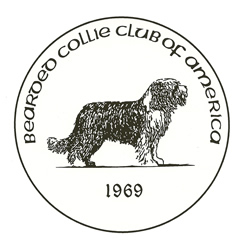A lot has changed since the long-ago days when I first became involved in the dog world. New sports, such as rally, agility, scent work, FASTCAT and dock diving have been introduced and happily accepted. A multitude of breeds have achieved AKC recognition, swelling the ranks to over 200 breeds on the roster with even more waiting to get in the game. So many titles are now up for grabs, affording ambitious dogs and owners the opportunity to accumulate a trail of letters which resembles an alphabet in a blender. Less welcome than all the fun and games, but always necessary are all the rules to define the latest events and titles. Yes, things have definitely changed in the dog world.
But have you noticed that conformation hasn’t really changed over the years? Additional titles and awards are on offer but the picture is much the same – a judge, a steward and a group of entrants piloting their dogs around a ring. Okay, clothing is different from earlier days. Lady exhibitors no longer are adorned with hats and long, white gloves but most still wear clothes popularly dubbed ‘business casual.’ Today’s judges must undergo training and tests to prove they’re competent. Earlier judges weren’t subjected to the reams of paperwork and observations of this current era. The object is more knowledgeable judges. And that’s admirable, but a lot more work and expense than in bygone days. Becoming a judge can put a real dent in your bank account.
Is it possible to move conformation judging into today’s high tech atmosphere? Maybe. Where do we start? Try to picture how things would progress at a space age conformation show. As the dog and exhibitor check in at ringside, a scanner reads the dog’s microchip and checks it against the registration number. Perhaps the computer printer could issue the arm band at that time. Next, a clever machine produces an x-ray of the dog’s skeleton. Then, an overlay geared to the breed’s standard shows the correct structure and angulation for comparison purposes when placed over the x-ray. From there, the dog proceeds to a smart-aleck treadmill which reports on both paw placement when the dog is gaited and the length of stride at a trot (again as appropriate for each breed). Now suppose the collected info on each dog is assembled and put into an assigned class. A computer rates each dog’s plus and minus scores to arrive at a rating and places the entrants from first to last. Next, the statistics on each dog in the class as well as the dogs themselves go before the judge.
A judge? Did you really think we would get rid of the judges? Well, the computer may have taken all the guesswork out of structure and gait but you need a human to judge temperament and other such things such as expression, tail carriage or bite. So the judge has the final say and if he or she feels the attitude of the second place dog outshines the machine-picked winner, then that one gets the nod.
There are benefits to high tech judging. If exhibitors may pick up the graded readouts on their dogs as they leave the ring they can learn their dogs’ virtues and faults, uncolored by the judge’s outlook or accompanying comments. There are bound to be other advantages and disadvantages to computerized judging. One major point would be cost. How would the price of setting up and running the equipment compare to hiring judges and paying their fees plus travel expenses? Would the equipment be more dependable than human judges who can get sick or injured, miss flights or be prevented from travelling due to weather conditions? Would exhibitors like the idea of their dogs being graded by a machine rather than by a human with likes and dislikes? Would the system result in the same dogs always taking home the ribbons? It would be easier on judges who could be supplied with information about each competitor that they would not have ordinarily. How would the system impact professional handlers with the talent to turn an average canine into a showing fool? And finally, such a system could discourage disgruntled exhibitors from placing their dog’s loss on politics, judges’ preferences, prejudices or lack of breed knowledge. Chances are someone will still be heard to mutter, “I think that machine needs to be recalibrated.”
–alice bixler, alice@bedlamkennels.com.




